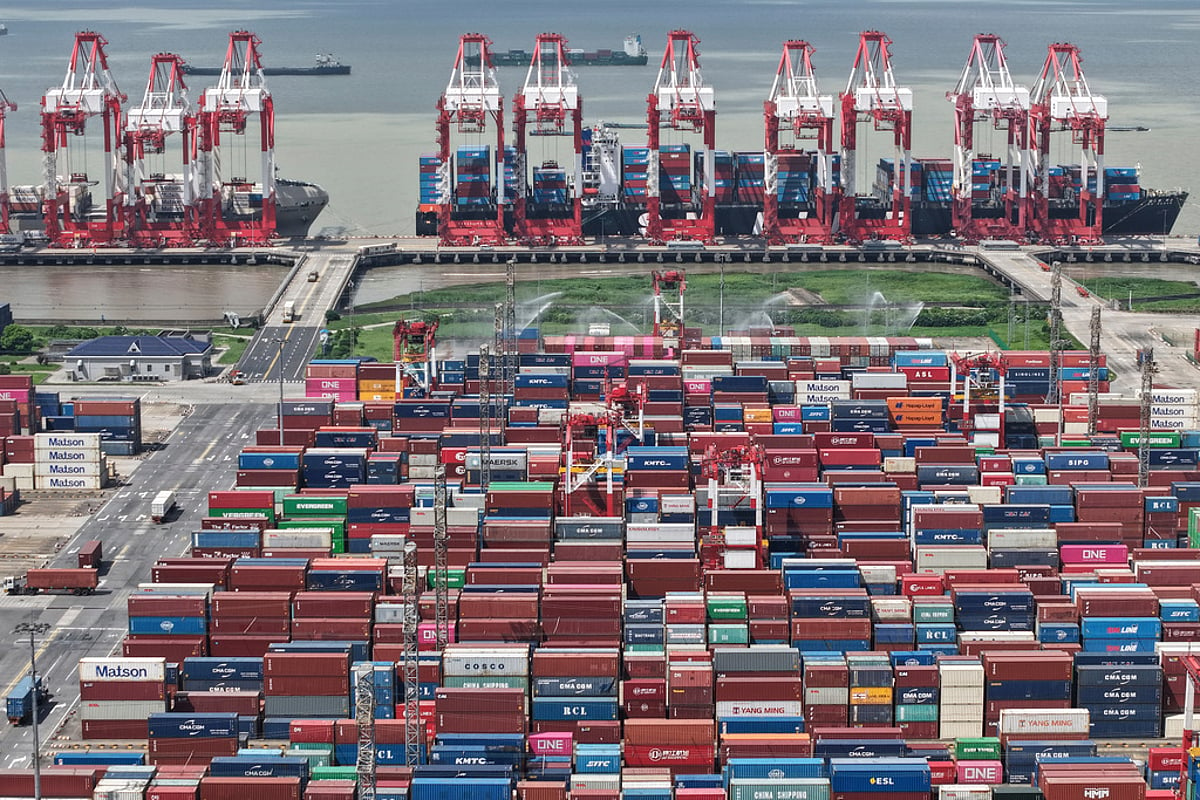China Exports to US Drop 27% Amid Global Trade Growth
Recent customs data reveals a complex picture of China’s trade dynamics, highlighting a significant decline in exports to the United States while overall global shipments have surged. This development underscores the shifting landscape of international trade as geopolitical tensions continue to influence economic relations.
Decline in Exports to the US
In September, China’s exports to the United States plummeted by 27% compared to the same month last year. This decline marks the sixth consecutive month of falling exports to the US, following a 33% drop in August. The downturn is largely attributed to ongoing trade tensions and tariff policies implemented by the US government aimed at encouraging domestic manufacturing.
Global Export Growth
Despite the challenges faced in the US market, China’s overall exports reached $328.5 billion in September, reflecting an 8.3% increase year-on-year. This growth surpassed economists’ expectations and represents a notable improvement from the 4.4% increase recorded in August. The rise in global shipments indicates that China is successfully diversifying its trade relationships beyond the US.
Import Trends
China’s imports also showed positive momentum, rising by 7.4% in September, a significant increase from the 1.3% growth seen in August. However, the country’s domestic economy continues to face challenges, particularly in the real estate sector, which is impacting consumer demand and overall economic stability.
Shifting Trade Patterns
As exports to the US decline, China has been actively seeking to expand its market presence in other regions. Shipments to Southeast Asia increased by 15.6% year-on-year in September, while exports to Latin America and Africa rose by 15% and an impressive 56%, respectively. This shift reflects China’s strategy to mitigate the impact of US tariffs by strengthening trade ties with other markets.
Economic Outlook
Wang Jun, vice minister of China’s customs agency, acknowledged the complexities of the current trade environment, stating that “the external environment is still severe and complicated.” He emphasized the need for continued efforts to stabilize trade as uncertainties loom in the fourth quarter of the year.
Economist Gary Ng from Natixis noted that while China’s exports demonstrate resilience due to competitive pricing, the potential for escalating export controls could pose a more significant threat to supply chains in the future.
Rising Tensions with the US
Recent developments have further strained US-China relations. President Trump has threatened to impose an additional 100% tariff on Chinese goods and has introduced new export controls on critical software. In retaliation, China announced new port fees for American ships, escalating the ongoing trade conflict. These tensions raise concerns about the potential impact on planned meetings between Trump and Chinese President Xi Jinping, as well as the broader prospects for a comprehensive trade agreement.
FAQs
What factors are contributing to the decline in China’s exports to the US?
The decline is primarily due to US tariffs aimed at encouraging domestic manufacturing, alongside ongoing geopolitical tensions that have strained trade relations.
How have China’s overall exports performed recently?
China’s overall exports increased by 8.3% year-on-year in September, reaching $328.5 billion, indicating a successful diversification of trade beyond the US market.
What are the implications of rising tensions between the US and China?
The escalating tensions could hinder progress towards a trade agreement and may lead to further economic repercussions, including increased tariffs and export controls that could disrupt global supply chains.
Conclusion
China’s trade landscape is currently characterized by a significant decline in exports to the US, juxtaposed with robust growth in global shipments. As geopolitical tensions escalate, the need for strategic adjustments in trade relationships becomes increasingly critical. Moving forward, both nations must navigate these complexities to stabilize their economic interactions.
The decline in exports to the US is part of a broader trend affecting many countries engaged in trade with China. As nations reassess their economic dependencies, some are exploring alternative suppliers or markets, which could further influence China’s export strategies. This shift may lead to a reconfiguration of global supply chains, as businesses seek to mitigate risks associated with geopolitical uncertainties.
Additionally, China’s efforts to enhance trade with emerging markets may provide new opportunities for growth. By investing in infrastructure and fostering bilateral agreements, China aims to solidify its position as a key player in global trade. This proactive approach could help offset the adverse effects of declining exports to the US and contribute to a more balanced economic landscape in the long term.
Also Read:
U.S. Imposes Fees on Chinese Ships Amid Trade Tensions







